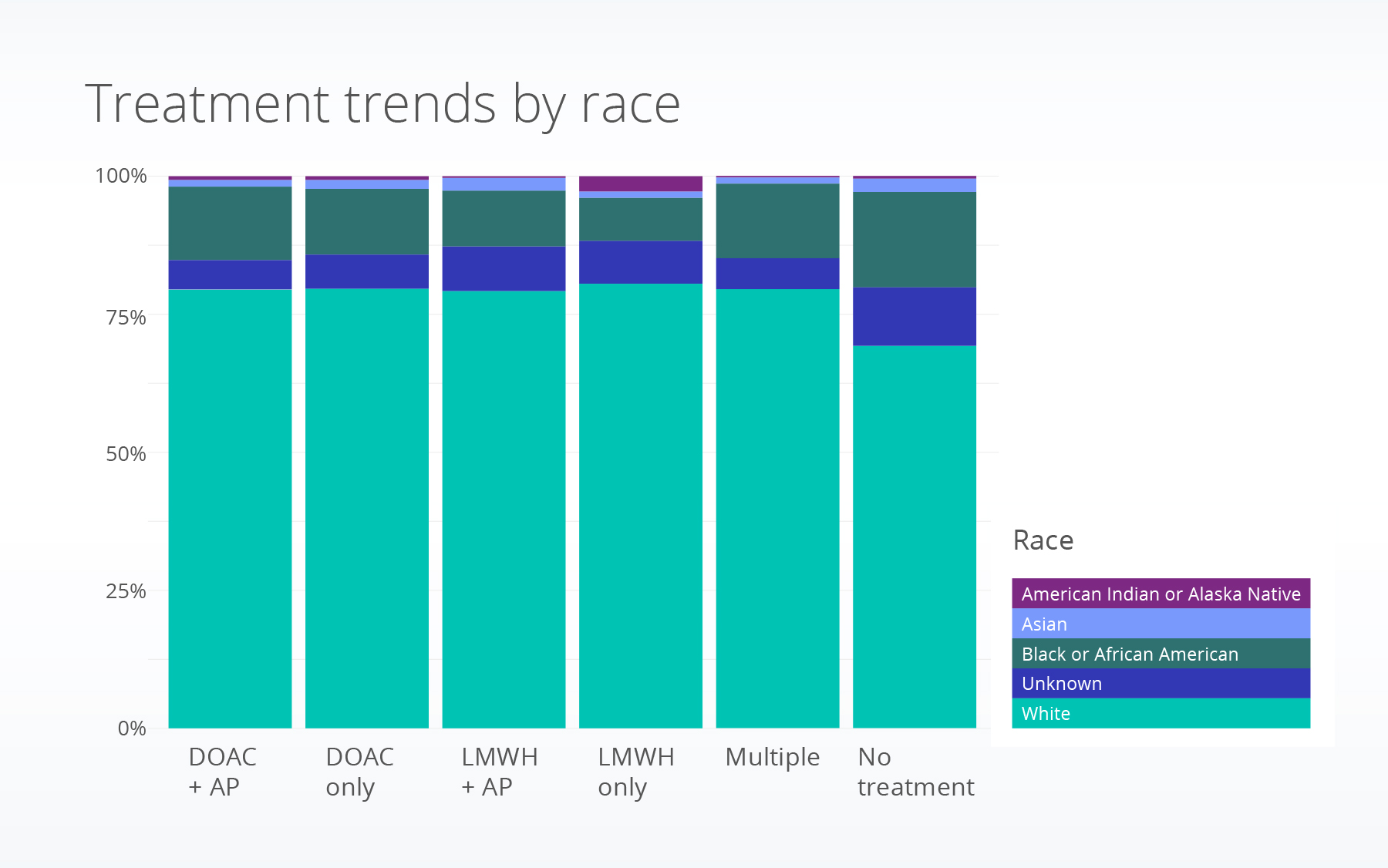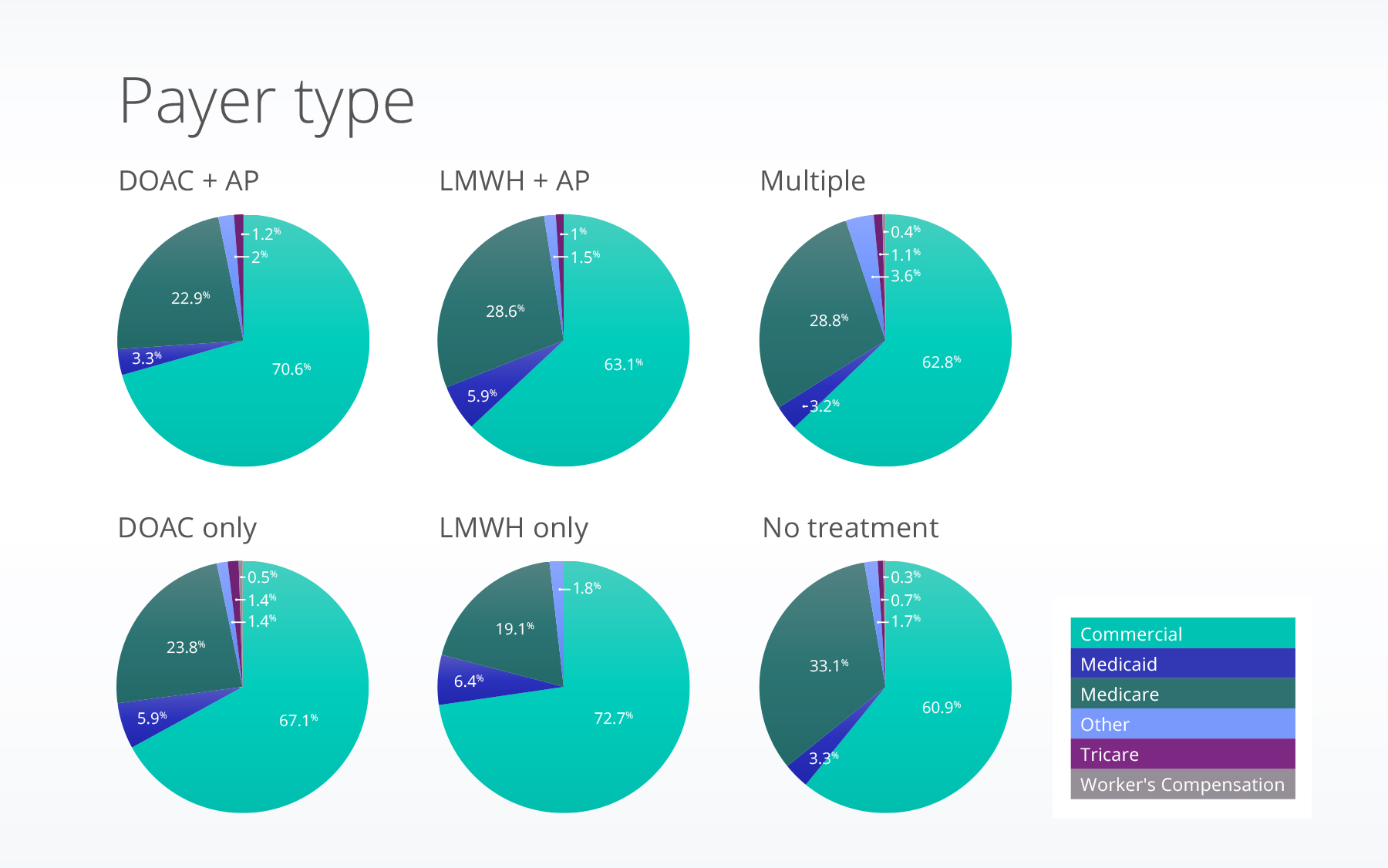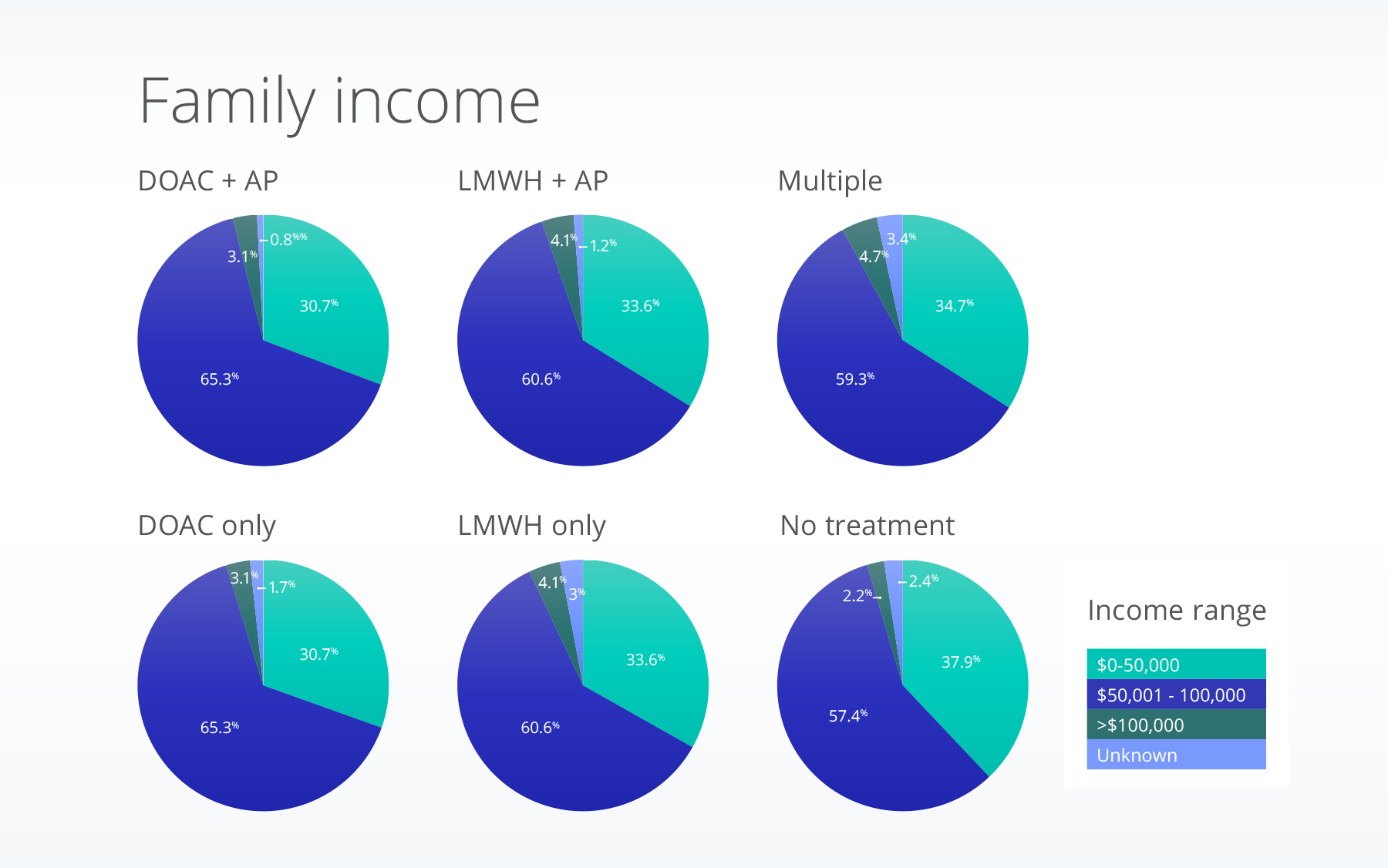- The aim of this analysis was to compare different prescription trends post-venous stenting and set the foundation for future research.
- We identified a disparity showing that certain populations are less likely to receive prescriptions for medications within 30 days following a stent placement.
- People who did not receive a prescription were more likely to be Black, have Medicare as their insurance, and have a low income.
In collaboration with Boston Scientific, Truveta participated in an initiative to poll physicians who treat a variety of cardiovascular disease states to learn about high-interest areas where real-world data could be helpful. Results of the poll showed that they were curious to learn more about trends in medical management post-venous stenting as clinical guidelines still lack a clear consensus.
Vein stenting is a procedure that places a tube-like structure in a vein to maintain or increase blood flow. Common diagnoses among patients who receive venous stents include deep vein thromboses and post-thrombotic syndrome (Schleimer et al., 2019). There is limited evidence around the best practices for which drugs are associated with the best outcomes post-stent placement (Eijenraam et al., 2014). In 2018, a global survey was distributed to multiple medical societies to determine consensus around antithrombotic practices (Milinis et al., 2018). The researchers concluded there was consensus on the use of anticoagulants, but not antiplatelets post-procedure, though both are common. As clinical guidelines still lack a clear consensus, we were curious to learn what real-world data would show about medical treatment and any variations in care across demographics like race, ethnicity, or income.
In this analysis, we examined the question: “What are the trends in medical management following the placement of venous stents?” The aim of this analysis was to compare different prescription trends post-procedure and set the foundation for future research.
Methods
Within a subset of Truveta Data, we identified patients who received at least one of 14 venous stents. Patients were identified using unique device identification (UDI) codes for the device or a current procedural terminology (CPT) code for stent placement from January 2014 until September 2023. Patients were included regardless of diagnosis prior to stent placement.
Following the placement of the stent, we identified patients who received prescriptions for direct oral anticoagulants (DOACs), low-molecular-weight heparin (LMWH), antiplatelets (APs), and warfarin within 30 days post-procedure. Prescriptions were defined using RxNorm codes.
We describe the demographics — including social drivers of health such as income and payer type — of people who received a stent and those who received various prescriptions.
Results
Prescription Trends
We identified 6,143 patients with a stent placement. The median patient age was 61.1 years with 52% of patients over the age of 60. A majority were white (74.5%) and female (58.9%).
Nearly half (49.2%, n=3,028) of patients have no record of a prescription for a DOAC, LMWH, warfarin, or APs within 30 days after the procedure. Of patients who received a prescription, the majority received multiple prescriptions; this could include any combination of the medications examined. The next most common (15.3%) received a combination of DOACs and antiplatelets. All patients who were prescribed warfarin received APs and DOACs or LMWH and, therefore, fall into the multiple category (≥3 treatments prescribed).

Demographic Trends
Patient demographics differed across medication groups; Black or African American (henceforth referred to as Black) patients are more likely to receive no treatment compared to other racial groups (Prescribed Medication: White = 79.6% vs. Black = 12.5%; No prescription: White = 69.3% vs. Black = 17.3%). There were minimal differences in patient characteristics across treatment groups.

Additionally, patients who were on Medicare were more likely to not receive a prescription within 30 days of the procedure, compared to those with commercial insurance. These patients were also more likely to have a family income of less than $50,000 a year compared to patients who had a record of medical treatment.


Discussion
The goal of this analysis was to better understand the trends in medical management following the placement of venous stents and analyze differences in patient demographics and SDOH characteristics. We identified differences in who receives prescriptions for medications within 30 days following a stent placement; patients who did not receive a prescription were more likely to be Black, have Medicare as their insurance, and have a low income. These differences are not apparent among disaggregated treatment groups. There could be multiple explanations for these observations including that these groups are more likely to be advised to take over-the-counter medications that are not as well-captured in EHR data.
While this preliminary analysis uncovered interesting trends, there are a few limitations. This analysis didn’t examine initial diagnoses, comorbidities, risk profiles, duration of treatment, adverse events, or outcomes. Additionally, we did not include over-the-counter medication recommendations; however, free text post-procedure notes could be analyzed to uncover these recommendations that are not typically well-captured in prescription-focused EHR data.
Citations
- Eijgenraam, P., Cate, H., & Cate-Hoek, A. J. (2014). Venous stenting after deep venous thrombosis and antithrombotic therapy: a systematic review. Reviews in Vascular Medicine, 2(3), 88-97.
- Milinis, K., Thapar, A., Shalhoub, J., & Davies, A. H. (2018). Antithrombotic therapy following venous stenting: international Delphi consensus. European Journal of Vascular and Endovascular Surgery, 55(4), 537-544.
- Schleimer, K., Barbati, M. E., Grommes, J., Hoeft, K., Toonder, I. M., Wittens, C. H., & Jalaie, H. (2019). Update on diagnosis and treatment strategies in patients with post-thrombotic syndrome due to chronic venous obstruction and role of endovenous recanalization. Journal of Vascular Surgery: Venous and Lymphatic Disorders, 7(4), 592-600.
